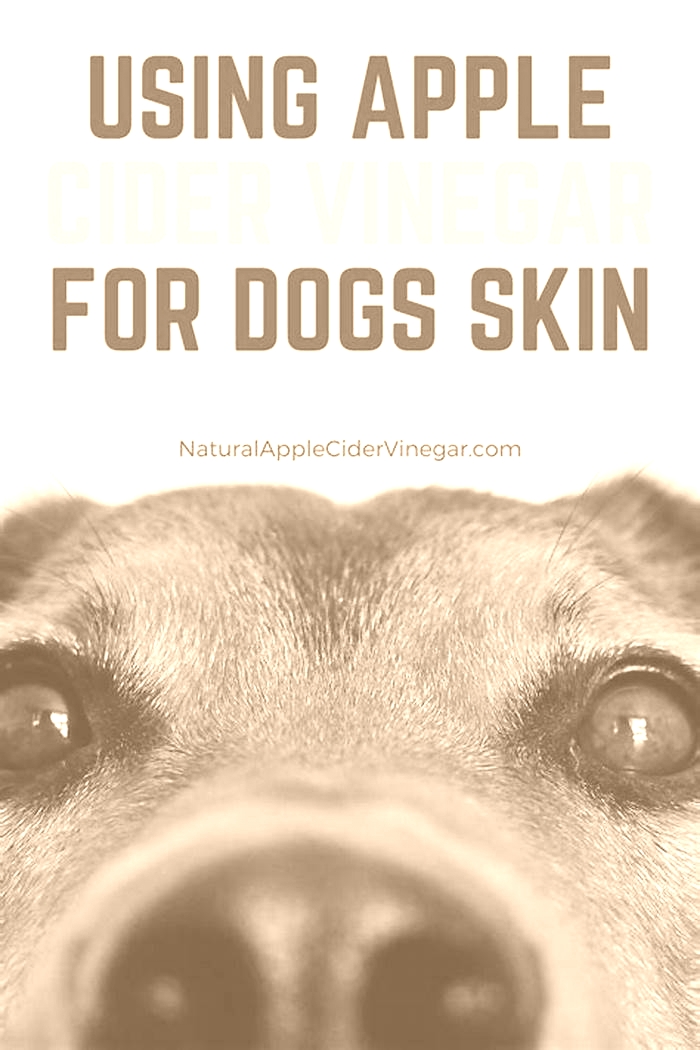Does apple cider vinegar help dog hives

How You Can Treat Dog Hives At Home: 6 Safe And Effective Remedies
Disclosure: Our recommendations are based on our testing, research and analysis. We may earn a commission on products purchased using links on this page.
One of the mild allergic reactions that dogs experience is dog hives. Uncommon, but it can lead to unpleasant complications for your pooch. In rare cases, hives can lead to dog anaphylaxis, which can be life-threatening.
Like more major issues such as ticks, fleas, and other pesky parasites, its best to deal with them to minimize your dogs experience of itchy skin, dog rashes, and irritated skin, and maintain their high quality of life.
This article covers the basics of dog hives. Why they appear, and six effective and natural home remedies you can do to get your pooch feeling at the top of their game again.
Understanding Dog Hives
Hives (urticaria) are swollen, red, usually itchy patches of skin that tend to appear and then disappear almost as suddenly commonly.
The common causes are broad and range from insect stings/bites to medications and even dog shampoos. Toxic chemicals or plants can also be a cause, and sunlight, exercise, genetic irregularities, and friction can exacerbate the symptoms.
Identifying Dog Hives
To identify dog hives, gently locate the irritated area. If it is a dog hive, it will appear swollen and could result in swelling in your dogs face, lips, throat, or ears. Sometimes they meld together and become bigger and larger, which is more challenging to deal with.
Before Home Treatment, Try These Safety Precautions
Its vital to consult a vet for a proper diagnosis. This applies equally if you are uncertain about the nature of your dogs hives. But if your dog experiences swelling in or around the airways, this can lead to dog anaphylaxis, which can be life-threatening.
If your dog seems to be having trouble breathing or is breathing in a laboured manner, consult the vet immediately. Equally, its worth speaking to your vet to get a diagnosis specific to your dog.
Home Remedies for Treating Dog Hives
Cold Compress
A cold compress helps to alleviate swelling, irritated skin, or hives. Press an ice pack (simply crushed ice in a bag, remove air, and seal) against the area gently.
You can also use a commercial gel pack or wrap that fits around the joint or area in question. Bags of frozen vegetables like corn or peas work, too, and can be used without ordering a product.
Oatmeal Bath
An oatmeal bath is a classic and inexpensive way to remedy minor hives. Simply run a lukewarm-mildly bath, pour and mix in 1 cup of oatmeal as the tub fills, and soak your pooch gently for 10-20 minutes. Pat and dry. For smaller breeds, you can use less oatmeal (1/3 cup)
Aloe Vera Gel
Aloe vera gel is very beneficial when it comes to calming irritated skin. You can even purchase animal aloe, which is even more pet safe and less likely to cause an unwanted reaction, as with human aloe gel.
Start small to test for an allergic reaction; dont let your dog ingest it. It can be a natural remedy for skin contact, but if ingested, its toxic.
Chamomile Tea Rinse
Chamomile in hot water, cooled, and applied to your dog is another natural allergy medication that helps with dry skin, skin rash, and itching. So again, for the mild symptom, its effective.
Apple Cider Vinegar Solution
This product comes in a number of forms, commonly in a spray. This is convenient as it allows the pet owner to spray the hive area before going on walks easily. Its best with a 50/50 solution of apple cider vinegar and water.
Honey
Honey is multipurpose for dogs; it can help with insect bites, skin wounds, and allergen hotspots. Feeding your dog a teaspoon of raw honey each day is the trick.
A large dog might need a touch more, and a smaller breed a smidge less. The trick is to purchase local raw honey, which contains pollen, to help your dog acclimate to allergy season.
Monitoring Progress and Consulting the Vet
Monitor the progress of your dogs skin irritation by checking the affected area before and after applying the allergy relief solution.
With consistent care, the hive areas should start to go down. But if the issue persists or worsens, you must contact the vet for a more detailed and personal diagnosis. Guides are all well and good, but we dont know your dog personally.
The Furr-dict
Dog hives are usually a minor issue, but one that you should keep an eye on anyway. Using any of the six safe, effective home remedies, you can stop your dog from itching, reduce its skin irritation, and maintain its comfortable and pain-free quality of life.
As dog owners, we must look after our dogs. Pet health should be a prime concern. If you want to know more about how to be a responsible pet owner, you should check out our website for all things cute and furry.
Frequently Asked Questions
Can dog hives be a sign of a serious underlying condition?
Its usually a simple case of an allergic reaction. Most of the time, dog hives are not threatening, aside from dog rashes, itchy skin, and an itchy dog!
Are there certain foods that can trigger hives in dogs?
Foods such as dairy, eggs, chicken, and beef can cause canine food allergies.
Can I use over-the-counter creams on my dogs hives?
Products like hydrocortisone cream are safe for dogs skin. But its essential to consult the vet or at least do some research before applying. Many human products can contain other chemicals that create an unwanted reaction in your dog.
How long does it usually take for hives to resolve with home treatment?
This depends. But within 24 hours is a reasonable expectation. At the most, a few days. Consult the vet if symptoms are persistent.
This can be very serious if your dog experiences swelling around the airways. It can lead to dog anaphylaxis, which can be life-threatening.
Sara is an experienced veterinarian with a history of working in Veterinary Medicine, Client Education, Dogs, Pet Care, and Surgery. She is a strong healthcare services professional with a graduate degree from St. George's University. You can connect with her onLinkedIn.
8 Easy Home Remedies for Treating Urticaria/Hives
Urticaria is an annoying allergic condition that can be extremely troubling at times. If you are suffering from urticaria, you are probably aware of how it can significantly impair ones sleep cycle and overall quality of life.

According to an article published in the American Family Physician, urticaria has a lifetime prevalence of 2o percent. Urticaria (also referred to as hives or idiopathic urticaria) is a reaction on the skin caused due to certain allergens that you either encounter or consume. When you are exposed to an allergen, your body releases an acidic protein called histamine that is responsible for the intense puristic wheals, itching, inflammation, redness, and swelling in the affected area(s).
Since histamines are the primary culprits for causing the allergic reaction, it is quite possible that your medical practitioner will recommend an antihistamine as the first line of treatment for hives. However, several other natural alternative medicines can alleviate the symptoms of urticaria and reduce its risk in the long term.
Here are eight hand-picked home remedies that have proven to be effective in managing urticaria/hives.
1. Apply a Paste Made of Apple Cider Vinegar and Corn Starch
Apple cider vinegar possesses strong antiseptic, anti-inflammatory and antihistamine properties that can help reduce the itching and inflammation associated with urticaria. Because apple cider vinegar is made of apples fermented by yeast and bacteria, it is also rich in probiotics that can help reduce hives.
Prepare a paste of apple cider vinegar and corn starch, and apply on the affected area after a tepid-water bath as the skin can easily absorb the blend. Corn starch also helps soothe skin irritation and welts.
You can also add two cups of apple cider vinegar to a bathtub of warm water. Soak in it once a day for about 20 minutes daily.
Follow any one of the above-mentioned methods daily until you see a marked improvement in your condition.
2. Include Turmeric in Your Daily Diet
The golden spice, turmeric possesses antihistamine, anti-inflammatory, antioxidant, antiseptic, and anti-microbial properties that help alleviate the distressing effects of hives. These therapeutic properties of turmeric are attributed to its chemical component, cur-cumin.
Add a teaspoon of turmeric powder to a glass of warm milk. Mix them well and consume this concoction once daily until your eruptions heal. You can add honey to enhance its taste. You can also make turmeric a part of your daily diet by including it in your everyday meals.
3. Soothe the Inflamed Area with Ginger
The inflammation caused due to hives causes a sudden rush of blood in the capillaries. This leads to swelling and redness. Because of its anti-inflammatory properties, ginger improves the circulation around the inflamed area by targeting the genes and enzymes responsible for the pain and swelling.
Boil one-fourth cup brown sugar, a tablespoon of crushed ginger, and three-fourth cup vinegar together for three minutes. Cool this concoction and dilute it with water before dabbing it on the welts. Apply this brew three to four times a day until your skin heals completely.
Alternatively, you can chew on a piece of ginger or consume ginger tea on a regular basis.
4. Use Baking Soda to Reduce Irritation
Hives are acidic in nature, while baking soda (or sodium bicarbonate) is alkaline, which helps neutralize the acid. Baking soda is available in almost every kitchen and is an extremely common and effective home remedy for treating hives. It possesses potent anti-inflammatory features that can reduce swelling and inflammation.
Mix a tablespoon of baking soda with enough water to make a thick paste. Apply this paste on the rashes and welts and leave it on for about twenty minutes. Do this once daily until the hives are gone.
5. Apply a Cold Compress of Mint Solution
Mint possesses strong antioxidant properties that help in soothing the burning and itching sensation on the skin. The menthol present in this herb offers a cooling effect, and this makes mint an amazing herb for suppressing hives.
Crush 4-5 mint leaves and add these to a cup of boiling water. Once the solution is at room temperature, place it in the refrigerator to cool it down further. Soak a soft towel in this cool mint solution and dab it on the affected area for about 15 minutes. Repeat this three to four times daily until you feel relieved.
6. Consume Licorice Root Tea Regularly
Licorice root is proven to possess anti-inflammatory properties similar to those found in steroids. It has been used for centuries to treat a wide variety of ailments including chronic urticaria.
Crush a handful of licorice roots and infuse them in a cup of hot water for about five to ten minutes. Strain and consume this solution instantly. Licorice root is naturally sweet to taste, so you may not feel the need to add sugar/honey. Consume licorice root tea two to three times daily to soothe the inflammation and pain associated with urticaria.
7. Use Chamomile Tea to Alleviate Stress-Induced Urticaria
In numerous cases, it is tough to determine the underlying cause of hives. In such cases, it is often seen that even a stressful event can trigger erratic skin welts.
Chamomile is a wonder-herb that offers much-needed relief in stress-induced urticaria. It is one of the most ancient herbs known to mankind. Owing to its soothing properties, chamomile has been trusted to relieve stress and anxiety for centuries.
Brew a few chamomile leaves or tea bags for about ten minutes in hot water. You can consume the tea as is or add honey/sugar to enhance its taste. Consume three to four cups of chamomile tea daily to help relieve stress-induced hives.
8. Apply Oatmeal Compress to the Affected Area
If you think oatmeal can only offer you dietary fiber, you need to think again! Uncooked oatmeal can help relieve the persistent itching sensation in urticaria. The anti-inflammatory and soothing properties of oatmeal work well for relief against hives. Use this remedy in conjunction with any of the other treatments mentioned above to experience faster resolution of symptoms.
Make an oatmeal compress to reduce the itching in the affected area. Place a handful of oatmeal on a piece of cotton cloth placed in a bowl. Pour a little warm water over it and let the oatmeal soak for about two to three minutes. Tie the cloth to form a warm compress and dab it on the eruptions. Use this compress daily in your bath to reduce inflammation.
Urticaria can be extremely uncomfortable, especially when it develops suddenly and unexpectedly. This condition can ruthlessly affect your normal life. Fortunately, you can depend on Mother Nature for simple remedies that can help alleviate the symptoms and effects of hives. The aforementioned home remedies will help you better manage the breakouts and reduce the risk of developing urticaria in the long term.









